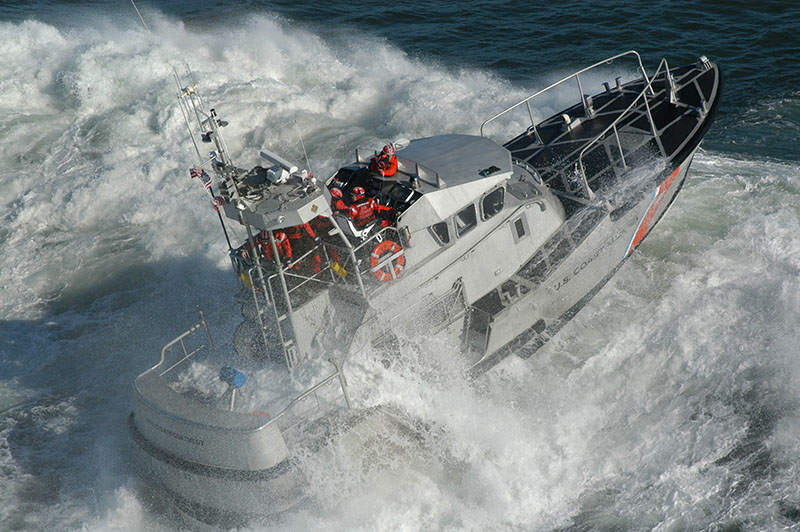The Coast Guard’s workhorse lifeboats are in danger of becoming obsolete with aging engines, and the answer will be either building a new class or embarking on a major service life extension, the Coast Guard’s acquisition chief says.
The 47’ lifesaving boat was a leap forward when it replaced the old 44’ design in the 1990s. But the Detroit Diesel engines in the class are no longer manufactured, and “unfortunately they’re becoming obsolete in terms of support,” Rear Adm. Mike Haycock said Wednesday at the Multi-Agency Craft Conference.
Coast Guard planning is in the very early stages, but considering the service’s limited capital funds, Haycock – who heads the Acquisition Directorate – said he expects a service life extension project (SLEP) will be a likely outcome.
“The cost differential is substantial. I don’t think we have room in our capital budget,” he said.
“If you’re in the boat sustainment business, I’d keep an eye on that,” Haycock advised the audience at MACC, organized by the American Society of Naval Engineers and hosted by the Coast Guard Yard at Baltimore.
A service life extension would require not just new engines for the 107 lifeboats in service, but new transmissions and other systems “so we can get another 20 years out of these,” Haycock said.
The 47’ class was originally 117 boats, and about 10 are retired now – originally because they were no longer needed, and now are a source of spare parts, Haycock said.
Haycock could not say what the timeline would be for doing a SLEP, but the time is coming for a decision.
“The way things are going, we won’t be able to support them past 2019,” he said.




